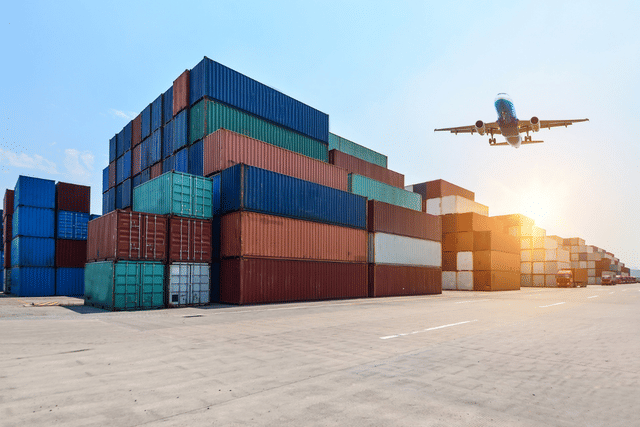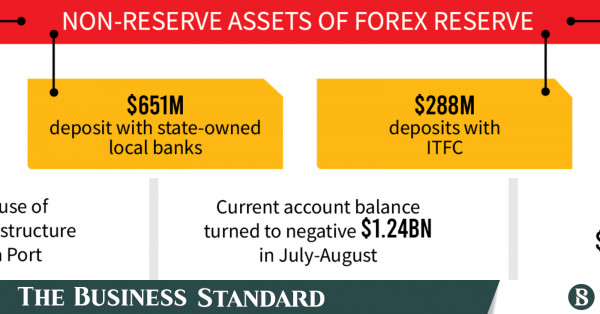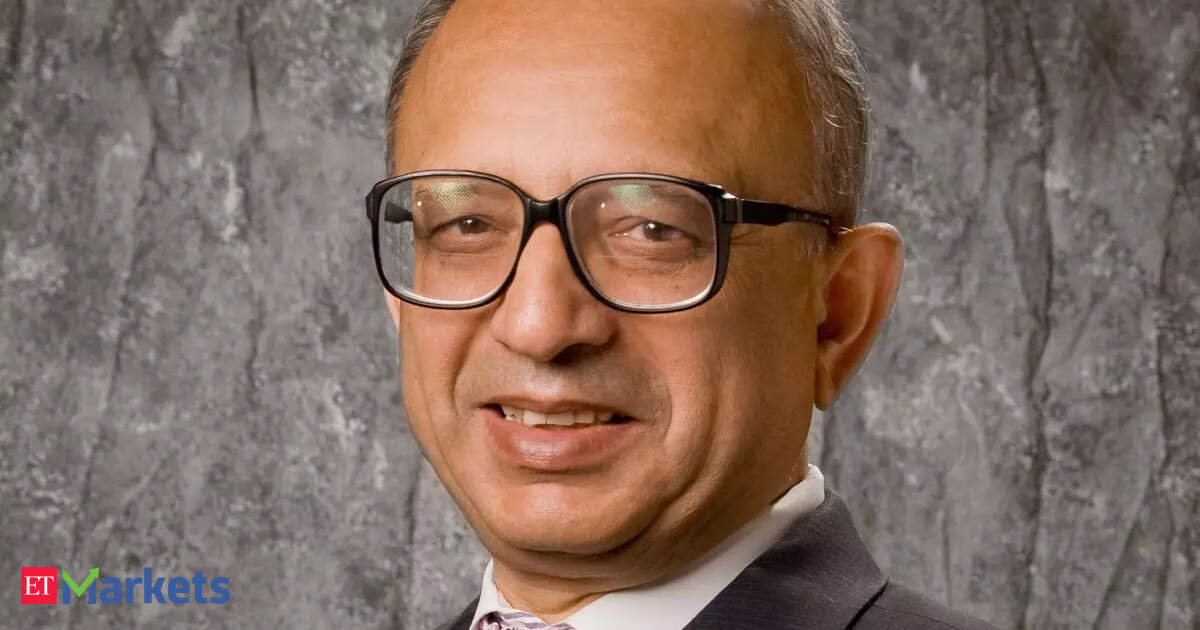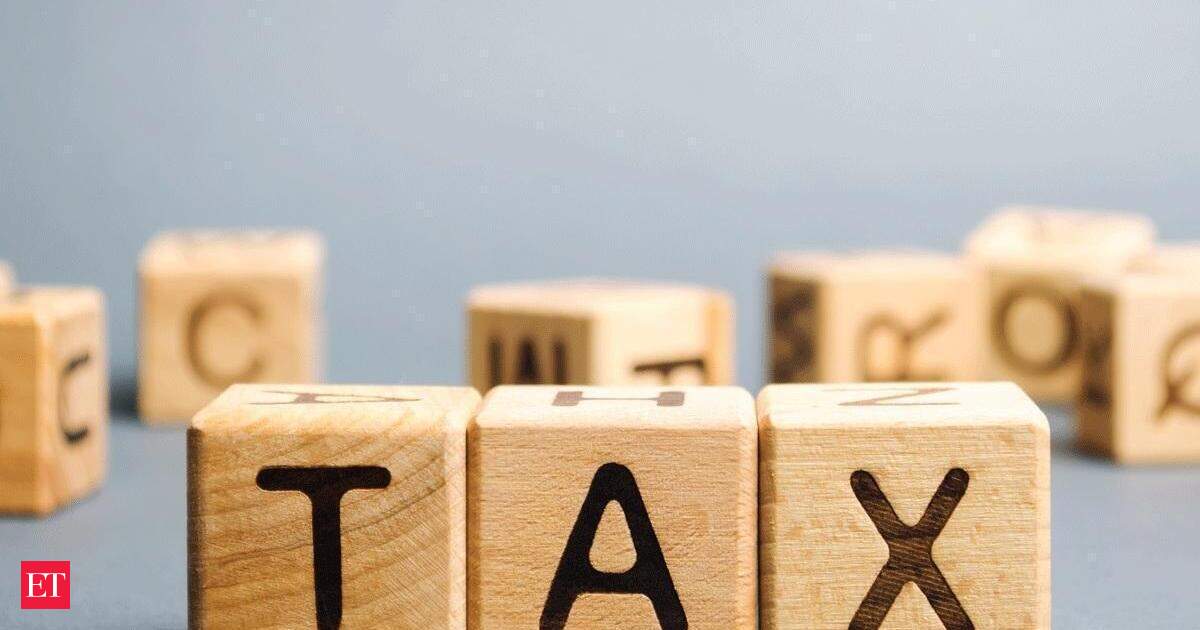See from 3.30
Latest Thread
You are using an out of date browser. It may not display this or other websites correctly.
You should upgrade or use an alternative browser.
You should upgrade or use an alternative browser.
See from 3.30
You have video? It didn't post?
I meant the video I had postedYou have video? It didn't post?
But the Bombay Nagpur Expressway is also coming on nicely. That's like half the country.Quite the road
Some good news and analysis:

 www.freepressjournal.in
www.freepressjournal.in

 www.business-standard.com
www.business-standard.com


Passenger vehicle exports from India rise by 46% in April-December: SIAM
Passenger vehicle exports from India rise by 46% in April-December: SIAM
 www.freepressjournal.in
www.freepressjournal.in

In landmark reform for foreign fund, India to open $1 trn govt bond market
Policy makers have spent months preparing to join global indexes, key benchmarks that increasingly determine how large asset managers allocate their capital

Indian Economy And Trade In 2021-22: Exports And Production-Linked Incentive Scheme, Analysed
India’s exports have undergone a dramatic change in the past decade and a half.In 2021-22, Indian industrial capacity generated enough excess output to dramatically increase exports.With the PLI scheme, India’s exports are poised to rise significantly over the next few years.
swarajyamag.com
By using constant 2015 USD it is clear that Indian nominal GDP is far from 3 trillion USD level. It is still 2.5 trillion USD, while Indonesia using the constant price 2015 still shows a trillion USD.
This why Indian claim that their economy has already been 3 trillion USD in nominal term should be debunked.
@Indos , whats the number for 2021?...given 2020 was covid year

Now at $3.1t, Indian economy is set to surpass Japan as Asia’s second largest by 2030
The Indian economy is currently the sixth-largest in the world, behind the US, China, Japan, Germany and the UK
www.khaleejtimes.com
It is not "still" 2.5 trillion....
You are spreading too much confusion among the low-intelligent 5th column echo chamber there lol (Most Bangladeshis hate that jamati 5th column group type over-represented there by lovefest proxy to the country that genocided so many of their people, prompting liberation and independence that these jamatis despise)
If you would like, you can show their constant dollar vs nominal difference (since if logic extends to India, should it not for others?) and see what illiterate response they give for yourself.
i.e why the 20% divergence or so in their case?...whereas its far lower for Indonesia and India (both following SDDS instead of low-developed stats system in IMF?)
Here is part of the reason as I already posted before:

Forex reserves overstated by $7.2bn: IMF
The foreign exchange reserve of $46 billion as reported at the end of June this year was overstated by 15%

Can’t have your cake and eat it too
A 15% overstatement in counting official reserves is no trivial matter. The IMF findings in this regard are concerning. Forewarned is forearmed, says an old proverb. Reserve asset portfolios have special characteristics that distinguish them from other foreign currency assets. There are...
If a country lies+inflates there (of all places, with already JUNK credit rating) and is called out by the IMF on it.... would there be magical stop to prevent it inflating elsewhere (simply to try borrow more given its JUNK credit rating)?
It just gets worse for them when you bring up consumption and investment parameters (i.e international cross-flows that can be proven beyond a doubt).
A big ole inflation model stuck on mono-export RMG extrapolation.
BTW funny trolling there @Jackdaws
Where?@Indos , whats the number for 2021?...given 2020 was covid year

Now at $3.1t, Indian economy is set to surpass Japan as Asia’s second largest by 2030
The Indian economy is currently the sixth-largest in the world, behind the US, China, Japan, Germany and the UKwww.khaleejtimes.com
It is not "still" 2.5 trillion....
You are spreading too much confusion among the low-intelligent 5th column echo chamber there lol (Most Bangladeshis hate that jamati 5th column group type over-represented there by lovefest proxy to the country that genocided so many of their people, prompting liberation and independence that these jamatis despise)
If you would like, you can show their constant dollar vs nominal difference (since if logic extends to India, should it not for others?) and see what illiterate response they give for yourself.
i.e why the 20% divergence or so in their case?...whereas its far lower for Indonesia and India (both following SDDS instead of low-developed stats system in IMF?)
Here is part of the reason as I already posted before:

Forex reserves overstated by $7.2bn: IMF
The foreign exchange reserve of $46 billion as reported at the end of June this year was overstated by 15%www.tbsnews.net

Can’t have your cake and eat it too
A 15% overstatement in counting official reserves is no trivial matter. The IMF findings in this regard are concerning. Forewarned is forearmed, says an old proverb. Reserve asset portfolios have special characteristics that distinguish them from other foreign currency assets. There are...www.tbsnews.net
If a country lies+inflates there (of all places, with already JUNK credit rating) and is called out by the IMF on it.... would there be magical stop to prevent it inflating elsewhere (simply to try borrow more given its JUNK credit rating)?
It just gets worse for them when you bring up consumption and investment parameters (i.e international cross-flows that can be proven beyond a doubt).
A big ole inflation model stuck on mono-export RMG extrapolation.
BTW funny trolling there @Jackdaws
@Indos , whats the number for 2021?...given 2020 was covid year

Now at $3.1t, Indian economy is set to surpass Japan as Asia’s second largest by 2030
The Indian economy is currently the sixth-largest in the world, behind the US, China, Japan, Germany and the UKwww.khaleejtimes.com
It is not "still" 2.5 trillion....
You are spreading too much confusion among the low-intelligent 5th column echo chamber there lol (Most Bangladeshis hate that jamati 5th column group type over-represented there by lovefest proxy to the country that genocided so many of their people, prompting liberation and independence that these jamatis despise)
If you would like, you can show their constant dollar vs nominal difference (since if logic extends to India, should it not for others?) and see what illiterate response they give for yourself.
i.e why the 20% divergence or so in their case?...whereas its far lower for Indonesia and India (both following SDDS instead of low-developed stats system in IMF?)
Here is part of the reason as I already posted before:

Forex reserves overstated by $7.2bn: IMF
The foreign exchange reserve of $46 billion as reported at the end of June this year was overstated by 15%www.tbsnews.net

Can’t have your cake and eat it too
A 15% overstatement in counting official reserves is no trivial matter. The IMF findings in this regard are concerning. Forewarned is forearmed, says an old proverb. Reserve asset portfolios have special characteristics that distinguish them from other foreign currency assets. There are...www.tbsnews.net
If a country lies+inflates there (of all places, with already JUNK credit rating) and is called out by the IMF on it.... would there be magical stop to prevent it inflating elsewhere (simply to try borrow more given its JUNK credit rating)?
It just gets worse for them when you bring up consumption and investment parameters (i.e international cross-flows that can be proven beyond a doubt).
A big ole inflation model stuck on mono-export RMG extrapolation.
BTW funny trolling there @Jackdaws
India uses different fiscal period than the rest of countries. Indian media refer to fiscal period of 2021-2022 March.
For 2021 (Jan-December ) it is still below 3 trillion USD based on latest IMF projection
Fun with the pdf jamati brigadeWhere?
India uses different fiscal period than the rest of countries. Indian media refer to fiscal period of 2021-2022 March.
For 2021 (Jan-December ) it is still below 3 trillion USD based on latest IMF projection
Bro I get it.... 2.95 trillion is technically not 3 trillion. ...because of fiscal year variance.
We can round up just a touch you know?
All I am saying is if we do this (2.95 is not 3 yet) for one side ....shall we go into basic resolution for the other side?
It is only fair right?
The whole basis of that rubbish article there in that thread.....begs to ask question.... has IMF accepted their "rebasing" in the same projection you quote?
If a country has lied and overstated its forex reserves by 15% (according to the IMF), will it help get it into better data standard that Indonesia and India have (with IMF) or not?
You know this is all connected to reason they have a junk credit rating right?
I have already been over with you the deeper flaws of their GDP number correlation with:
- Energy consumption
- Foreign investment
- Tax revenues
- Total Exports + Imports, especially their composition
How none of them compare well with any other developing country in same GDP stage (today or previously).
Why do things always fall apart in correlation when the basic number is something directly measured?
Why do all other countries correlate far better?
This is why (some of) the discrepancy shows up in constant dollars and PPP to begin with.
Per capita in constant dollars and PPP are what should be used for per capita income cross-country comparison to begin with....not nominal.
Mono-export reliant on 0% tariff (along with incentive to inflate GDP denominator to try squeeze more foreign loans) is not a proper industrialisation+development....and it shows.
Yup budget time is around corner.....should be fun analysis soon.
Nice new DP pic btw
There is big variation among some important parameters even among "BIMARU" @Jackdaws
For example, most of the (25% of initial cohort) Indian kids that dont finish high school would be almost singularly addressed by improving Bihars 46% completion rate to say UP's completion rate of 74% (which surprisingly is about the Indian average).
For example, most of the (25% of initial cohort) Indian kids that dont finish high school would be almost singularly addressed by improving Bihars 46% completion rate to say UP's completion rate of 74% (which surprisingly is about the Indian average).
Yup budget time is around corner.....should be fun analysis soon.
Nice new DP pic btw.... its your kid or niece?
My niece
Fairly balanced take:

 economictimes.indiatimes.com
economictimes.indiatimes.com
With regards to crypto, it is good govt has de-facto signalled it as long term legal going forward (this was a grey area worry for some time)...and tax its capital gains at 30%.
Digital rupee (also going to be blockchain) will be introduced at some point (have to see how they design and implement it)...to provide competition in the realm.
Only issue I have (in this part of the budget) is they should rationalise all "high end" investment capital gains + wealth taxes to one rate (some are at 15, some are at 20...this one is at 30 etc.. )
If its not exactly job producing + money velocity inducing (but rather investment sink etc) no reason why not standardise to 30% or even 40% and take burden off borrowing needs.
In fact keep it at set rate of whatever % and then (commensurate to average job/labour creation/utilisation per rupee) add relevant deductions/exemptions.
Overall spending is going towards more capital-intensive and capital-inductive strategy, this is good to see.
India needs to get its capital formation rate to 35% and then 40% as quick as possible....from current ~30%.
Invest invest invest (as far as possible) rather than consumption status quo.
Basic consumption welfare and support must be strengthened....but rest must continue to investment focus.
India must continue to improve its supply side.
We need much much more machinery, training and organisation for our labour....its all investment based in the end.
PLI incentive strengthening looks good. Hopefully data flows in with time as to which are the most responsive + labour absorbing areas are and better rationalisation done mid term according to that.
I also feel there should have been some tax relief to middle class, especially lower middle class...given inflation concerns long term.
Overall 7/10 budget for me (taking into account the context of Indian federal setup, legacy and inertia).
@Indos @Jackdaws @Paro @Gessler et al.
========================
Interesting sector to watch out for going forward:

 www.financialexpress.com
www.financialexpress.com

It is a risk-taking Budget, not populist: Swaminathan Aiyar
“It is a bold budget going forward on investment but I do wish something more had been said on much more rapid asset sales, somebody should be taking the hit for very-very slow progress so far.”
With regards to crypto, it is good govt has de-facto signalled it as long term legal going forward (this was a grey area worry for some time)...and tax its capital gains at 30%.
Digital rupee (also going to be blockchain) will be introduced at some point (have to see how they design and implement it)...to provide competition in the realm.
Only issue I have (in this part of the budget) is they should rationalise all "high end" investment capital gains + wealth taxes to one rate (some are at 15, some are at 20...this one is at 30 etc.. )
If its not exactly job producing + money velocity inducing (but rather investment sink etc) no reason why not standardise to 30% or even 40% and take burden off borrowing needs.
In fact keep it at set rate of whatever % and then (commensurate to average job/labour creation/utilisation per rupee) add relevant deductions/exemptions.
Overall spending is going towards more capital-intensive and capital-inductive strategy, this is good to see.
India needs to get its capital formation rate to 35% and then 40% as quick as possible....from current ~30%.
Invest invest invest (as far as possible) rather than consumption status quo.
Basic consumption welfare and support must be strengthened....but rest must continue to investment focus.
India must continue to improve its supply side.
We need much much more machinery, training and organisation for our labour....its all investment based in the end.
PLI incentive strengthening looks good. Hopefully data flows in with time as to which are the most responsive + labour absorbing areas are and better rationalisation done mid term according to that.
I also feel there should have been some tax relief to middle class, especially lower middle class...given inflation concerns long term.
Overall 7/10 budget for me (taking into account the context of Indian federal setup, legacy and inertia).
@Indos @Jackdaws @Paro @Gessler et al.
========================
Interesting sector to watch out for going forward:

Economic Survey 2022: Next 10 years to see very high level of capex in railway sector
Post 2014, a conscious effort was made to improve the railway sector by substantially increasing the capex, according to Economic Survey 2021-22.
H
He is fking happy with this news , and aluminium coaches are coming this monthFairly balanced take:

It is a risk-taking Budget, not populist: Swaminathan Aiyar
“It is a bold budget going forward on investment but I do wish something more had been said on much more rapid asset sales, somebody should be taking the hit for very-very slow progress so far.”economictimes.indiatimes.com
With regards to crypto, it is good govt has de-facto signalled it as long term legal going forward (this was a grey area worry for some time)...and tax its capital gains at 30%.
Digital rupee (also going to be blockchain) will be introduced at some point (have to see how they design and implement it)...to provide competition in the realm.
Only issue I have (in this part of the budget) is they should rationalise all "high end" investment capital gains + wealth taxes to one rate (some are at 15, some are at 20...this one is at 30 etc.. )
If its not exactly job producing + money velocity inducing (but rather investment sink etc) no reason why not standardise to 30% or even 40% and take burden off borrowing needs.
In fact keep it at set rate of whatever % and then (commensurate to average job/labour creation/utilisation per rupee) add relevant deductions/exemptions.
Overall spending is going towards more capital-intensive and capital-inductive strategy, this is good to see.
India needs to get its capital formation rate to 35% and then 40% as quick as possible....from current ~30%.
Invest invest invest (as far as possible) rather than consumption status quo.
Basic consumption welfare and support must be strengthened....but rest must continue to investment focus.
India must continue to improve its supply side.
We need much much more machinery, training and organisation for our labour....its all investment based in the end.
PLI incentive strengthening looks good. Hopefully data flows in with time as to which are the most responsive + labour absorbing areas are and better rationalisation done mid term according to that.
I also feel there should have been some tax relief to middle class, especially lower middle class...given inflation concerns long term.
Overall 7/10 budget for me (taking into account the context of Indian federal setup, legacy and inertia).
@Indos @Jackdaws @Paro @Gessler et al.
========================
Interesting sector to watch out for going forward:

Economic Survey 2022: Next 10 years to see very high level of capex in railway sector
Post 2014, a conscious effort was made to improve the railway sector by substantially increasing the capex, according to Economic Survey 2021-22.www.financialexpress.com
Im not happy with the tax slabs for middle class. I feel they need some breathing space. Its been very difficult for them. But i guess he might give one next year before electionsFairly balanced take:

It is a risk-taking Budget, not populist: Swaminathan Aiyar
“It is a bold budget going forward on investment but I do wish something more had been said on much more rapid asset sales, somebody should be taking the hit for very-very slow progress so far.”economictimes.indiatimes.com
With regards to crypto, it is good govt has de-facto signalled it as long term legal going forward (this was a grey area worry for some time)...and tax its capital gains at 30%.
Digital rupee (also going to be blockchain) will be introduced at some point (have to see how they design and implement it)...to provide competition in the realm.
Only issue I have (in this part of the budget) is they should rationalise all "high end" investment capital gains + wealth taxes to one rate (some are at 15, some are at 20...this one is at 30 etc.. )
If its not exactly job producing + money velocity inducing (but rather investment sink etc) no reason why not standardise to 30% or even 40% and take burden off borrowing needs.
In fact keep it at set rate of whatever % and then (commensurate to average job/labour creation/utilisation per rupee) add relevant deductions/exemptions.
Overall spending is going towards more capital-intensive and capital-inductive strategy, this is good to see.
India needs to get its capital formation rate to 35% and then 40% as quick as possible....from current ~30%.
Invest invest invest (as far as possible) rather than consumption status quo.
Basic consumption welfare and support must be strengthened....but rest must continue to investment focus.
India must continue to improve its supply side.
We need much much more machinery, training and organisation for our labour....its all investment based in the end.
PLI incentive strengthening looks good. Hopefully data flows in with time as to which are the most responsive + labour absorbing areas are and better rationalisation done mid term according to that.
I also feel there should have been some tax relief to middle class, especially lower middle class...given inflation concerns long term.
Overall 7/10 budget for me (taking into account the context of Indian federal setup, legacy and inertia).
@Indos @Jackdaws @Paro @Gessler et al.
========================
Interesting sector to watch out for going forward:

Economic Survey 2022: Next 10 years to see very high level of capex in railway sector
Post 2014, a conscious effort was made to improve the railway sector by substantially increasing the capex, according to Economic Survey 2021-22.www.financialexpress.com
Well nobody expects a tax slab reduction when there is a pandemic caused delay in projects are there , and cash is quite lowIm not happy with the tax slabs for middle class. I feel they need some breathing space. Its been very difficult for them. But i guess he might give one next year before elections

Indian tycoon Agarwal seeks JVs for $15bn chip and display foray
Vedanta in talks with Japanese, South Korean and Taiwanese companies
BENGALURU -- Indian natural resources conglomerate Vedanta Group, controlled by billionaire Anil Agarwal, is exploring joint ventures with Japanese, Taiwanese and South Korean companies as part of its $15 billion investment plan to start chip and display manufacturing in India, a senior executive in the group told Nikkei Asia.
Vedanta is in talks to set up JVs with companies including Japan's Sharp, South Korea's Samsung and LG and Taiwan's Innolux for display manufacturing. Foxconn and Taiwan Semiconductor Manufacturing Co. (TSMC) are among the potential partners for a chip manufacturing deal.
Vedanta's foray into electronic component manufacturing will hinge on its Japanese display glass substrate subsidiary AvanStrate, in which it bought a 51% stake from the private equity firm Carlyle in 2017 for $158 million.
"It's a proposition that we want to do a JV. We will obviously be happy to do a technology transfer, or acquire a smaller company, but ideally we would want a long-term partner who will build and improve with us," Akarsh Hebbar, managing director at AvanStrate and Agarwal's son-in-law, told Nikkei Asia. Vedanta will hold a controlling interest in the display JV, if one comes through, while the company is amenable to parting with a majority stake in the chip business, he added.
Vedanta's foray into semiconductors and displays, its third attempt at electronics manufacturing, comes amid a broader push to explore new revenue streams. The acquisition of AvanStrate and those of Electrosteel Steel in 2018 and Ferro Alloys in 2020 to enter steel manufacturing are cases in point.
In 2016, the Vedanta Group had $10 billion lined up to manufacture LCD panels in Maharashtra State. The project was reportedly shelved after the company failed to secure government subsidies. The group's bid to buy debt-laden electronics manufacturer Videocon Industries was scuttled by a bankruptcy court earlier this month after Videocon's creditors -- Bank of Maharashtra, Small Industries Development Bank of India and the Industrial Finance Corporation of India -- raised concerns over the modest payout offered by Vedanta. The court has ordered fresh bids for Videocon's assets.
"Semiconductors and displays are a serious topic of discussion in the Indian government and conglomerates like ours," said Hebbar. "We always ask the question that if this is the right time to invest or come in."
According to Hebbar, now is the right time.

The government aims to turn India into a global hub for electronics manufacturing with a turnover of $400 billion by 2025. A National Policy on Electronics, floated in 2019, envisaged domestic manufacturing of 1 billion mobile phones by 2025, worth $190 billion, including 600 million handsets for export, valued at $110 billion.
Such plans imply that demand for electronic components will only soar in the years to come. The government estimates that in the financial year that ended in March 2020, India imported electronic components worth 1.15 trillion rupees (about $15 billion), of which about 37% came from China.
The government in December approved $10 billion in incentives to spur local manufacturing of semiconductors, which will see eligible manufacturing projects get support for up to half the cost of setting up shop, which has enthused the likes of the Tata Group and Vedanta to step up.
The chips and display units that Vedanta will manufacture in India will primarily cater to local demand for mobile phones, TVs, laptops and notebooks, reducing India's dependence on imports, said Hebbar.
Yet electronic component manufacturing in India suffers from the lack of an integrated supply chain, infrastructure and skilled labor, along with high initial investment, consultancy firm KPMG and global bank HSBC noted in a December 2020 report.
"One of the major setbacks to indigenous manufacturing in the country is the lack of an integrated supply chain and value chain," the firms highlighted, adding that "assurance of uninterrupted power availability, clean water etc. are not always readily available."
While India's energy availability has improved significantly over the years, the country still suffers from a shortage of water.

Vedanta has been developing its businesses both in India and abroad, mainly in the fields of natural resources such as oil and natural gas, copper, aluminum, lead and zinc. (Photo courtesy of Vedanta)
Data from the Ministry of Power shows that between April and December 2021, India met 99.5% of its energy needs, against 91.5% in the financial year ended March 2011. The nation's overall power generation increased 62.5% during this time.
However, the country's groundwater reserves have been depleting fast, leaving millions of Indians to grapple with an acute water shortage. The World Resources Institute counts India among the world's 17 most water-stressed nations, along with the likes of Qatar, the United Arab Emirates, Kuwait and Israel.
Agarwal is not a stranger to challenges. His is a quintessential story of materializing lofty ambitions with deft decision-making and grit, which explains his stupendous rise from being a scrap metal trader in India's financial capital, Mumbai, in the 1970s.
His empire -- spanning zinc, lead, silver, aluminum, iron ore, copper, steel, power, and oil and gas -- is built on a string of acquisitions, many of them distressed assets bought on the cheap, like government-owned Bharat Aluminium and Hindustan Zinc, iron ore company Sesa Goa, and steel manufacturers Electrosteel Steel and Ferro Alloys. The firm, however, spent big on iron ore company Sesa Goa, where it bought a 51% stake in 2007 for $981 million, and oil and gas major Cairn India, where Vedanta bought 58.5% in 2011 for $8.67 billion.
Under Agarwal, an advocate of reducing India's dependence on imports, Vedanta has grown into India's largest aluminum producer. It has cornered 80% market share in primary zinc and accounts for 25% of the country's crude oil production. The company churned out 868.8 billion rupees ($11.74 billion) in revenues and a net profit of 150.3 billion rupees ($2 billion) in the financial year that ended in March 2021.
Hebbar said Vedanta has already initiated discussions with potential customers of its products.
"We are talking to everyone from smartphone manufacturers like Oppo, Vivo and Xiaomi; laptop makers like HP, Dell, Lenovo; and TV brands like Samsung and LG," said Hebbar, adding that the company will pump in $15 billion to set up manufacturing operations, "most" of which will be spent in the next three years.

A Foxconn India plant that makes iPhones near Chennai. © Reuters
Initially, "We will have a production capacity of 40,000 wafers per month. Once it gets to 60,000 units, the economies of scale become better, and will improve even more at 80,000 units," said Hebbar. "At that stage, we will have 40% to 50% market share."
Hebbar added that in the second phase, Vedanta may explore organic light emitting diode (OLED) technologies or 16-nanometer and 10-nanometer chips.
The company is choosing among the states of Gujarat, Maharashtra, Andhra Pradesh, Telangana and Uttar Pradesh to set up its manufacturing units, which are expected to start "mass-scale" production in the next five years.
Good move. Kudos to govt on this front.
Pranab dada did damage to IN economy under UPA by that silly stunt.
If you look at the prospective revenue amounts involved (compared to investment choking that would arise), it didnt make sense even with basic CBA....unless you really wanted to claw back to pre 1990s situation of diktat.
Really too bad as I liked Pranab Dada overall. But glad this is being corrected so we can move on:

 economictimes.indiatimes.com
economictimes.indiatimes.com
Pranab dada did damage to IN economy under UPA by that silly stunt.
If you look at the prospective revenue amounts involved (compared to investment choking that would arise), it didnt make sense even with basic CBA....unless you really wanted to claw back to pre 1990s situation of diktat.
Really too bad as I liked Pranab Dada overall. But glad this is being corrected so we can move on:

Govt to settle almost all retro-tax cases this month: Revenue Secy
To repair India's damaged reputation as an investment destination, the government in August 2021 enacted a new legislation to drop all such demand and refund about Rs 8,100 crore collected on the condition that any pending lawsuit or legal challenge against the government anywhere in the world...
@Jackdaws @Paro @Indos @crixus @Rajaraja Chola et al.
When you have some time these 30 minutes are well spent watching this..... as Indian economy context, current and future are summarised quite eloquently (with strong evidence) by this gentleman.
It summarises many hours and days of reading about it across a year etc.
When you have some time these 30 minutes are well spent watching this..... as Indian economy context, current and future are summarised quite eloquently (with strong evidence) by this gentleman.
It summarises many hours and days of reading about it across a year etc.



